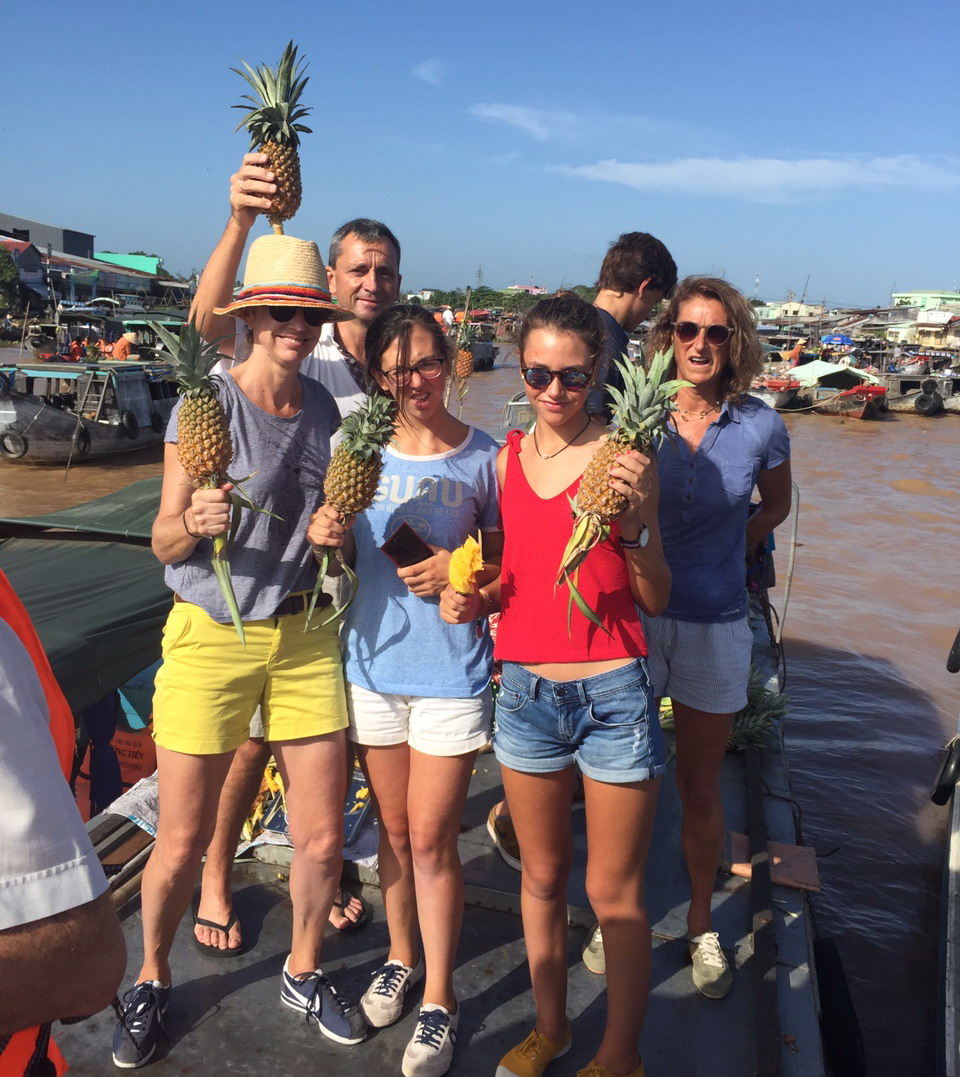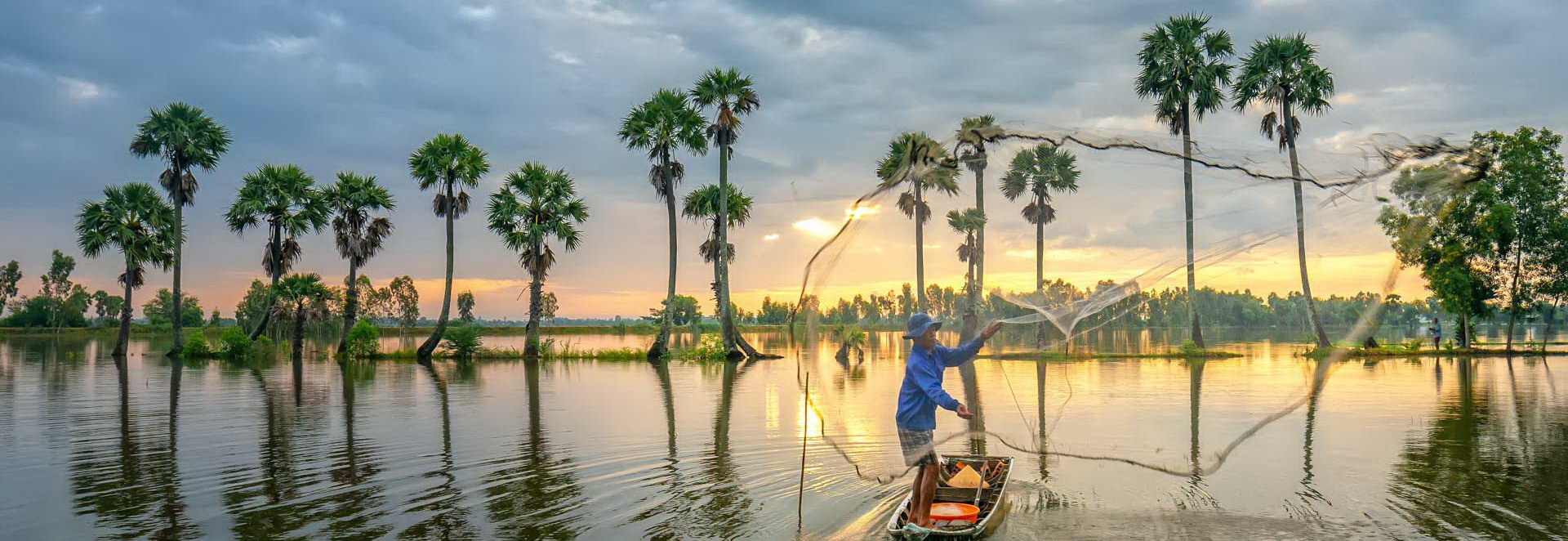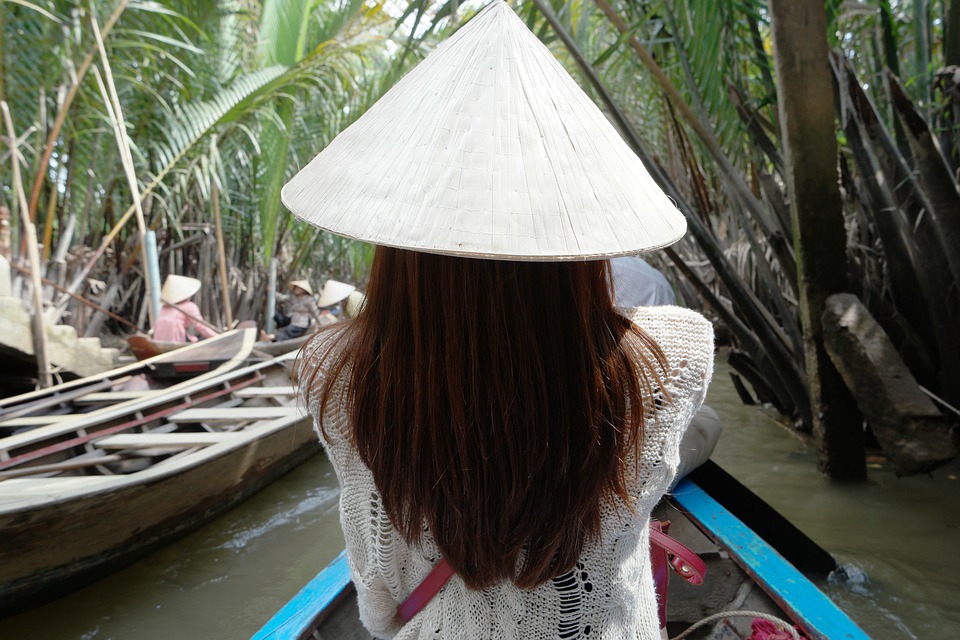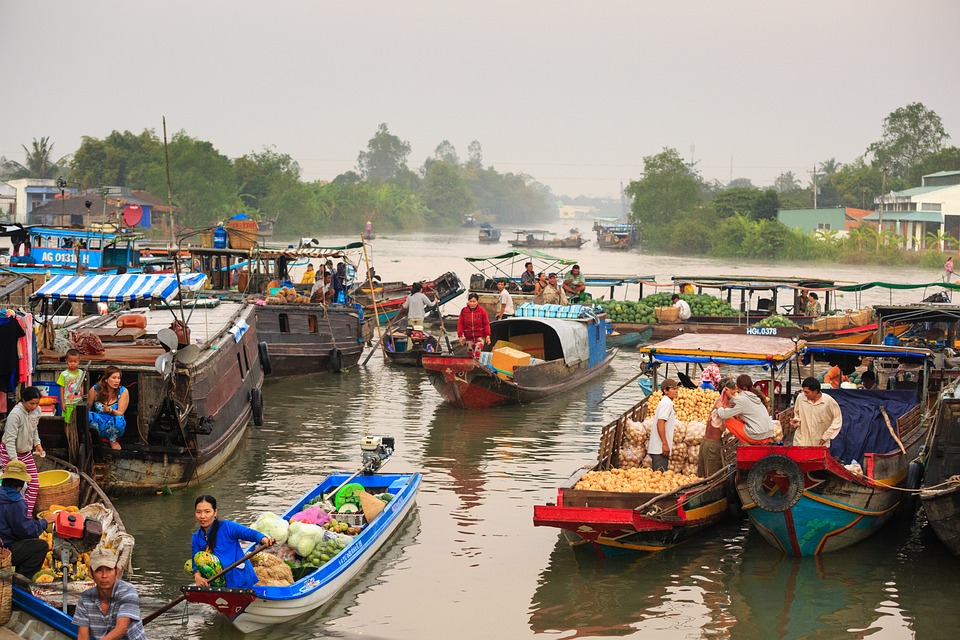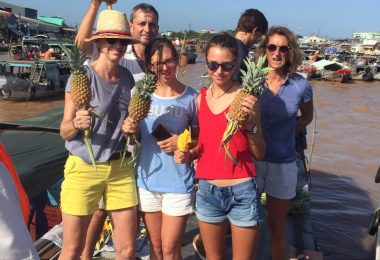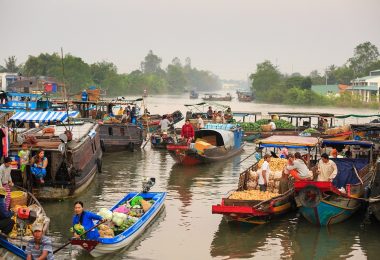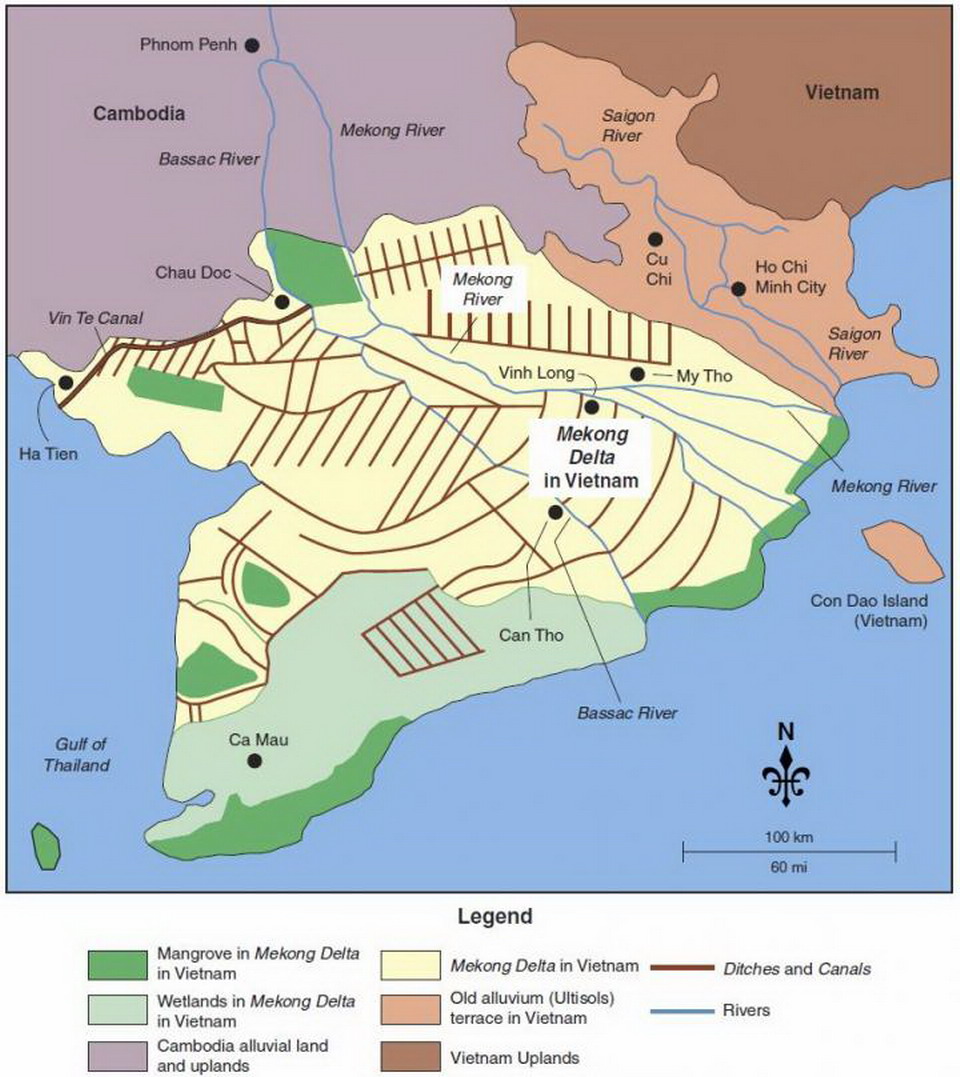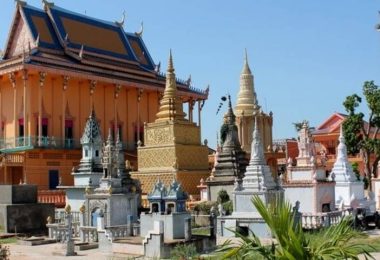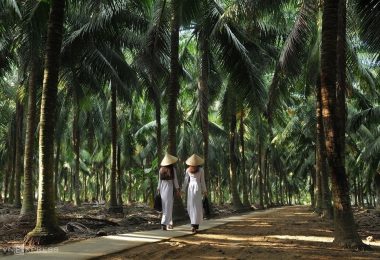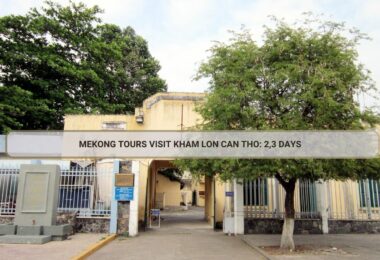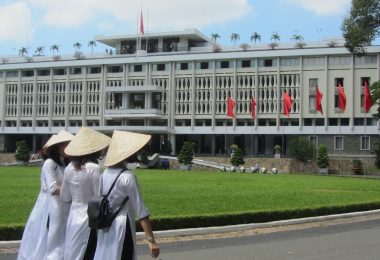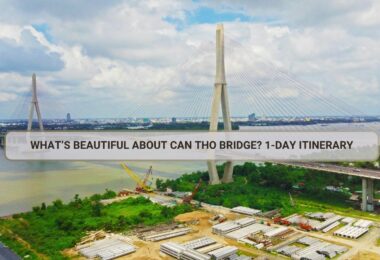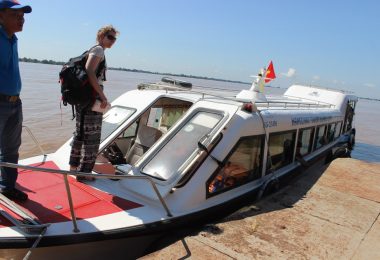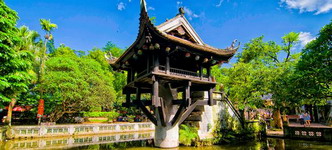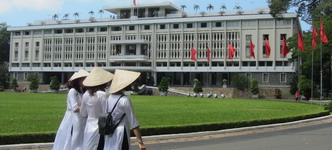Situated next to the tranquil Mekong River, Ba Dai Craft Village is not only a location brimming with tradition and craftsmanship but also a hidden story full of local pride and, a breathtaking journey. Ba Dai is treated as one of the ancient villages where boats are made in the area of the Cuu Long River Delta. However, what the village is actually about is not making boats – it is preserving hundreds of years old craft that are slowly fading away with time. Today, we will explore the fascinating world of Ba Dai, a small craft village, and find out about the tradition of boat making, the incredible local community, and all the reasons why a culture lover simply cannot miss out on it. Fasten your seatbelts, folks, because we are in for a wild ride on pieces of wood and Mekong River waves!
Geographic Location
Ba Dai Craft Village is located next to the stunning Mekong River in Long Hậu, Long Hồ, Đồng Tháp Province. Ba Dai Canal is about 2.5 km long, and throughout the construction, there are greens all around the site, and the water is perfectly still.
How to Get There
Traveling from Saigon to Dong Thap by Personal Vehicle
Distance: it is about 150 km from Saigon to Dong Thap, which is great for a road trip on a motorcycle or car. Below are two suggestions for traveling:
Route One: Start from downtown Saigon, go to Binh Chanh District, and at the Binh Thuan traffic interchange turn onto the National Highway 1A. You keep going straight ahead and after 16 km you reach My Yen – Vinh Loc and cross Ben Luc Bridge to go 14 km further to Tan An City, Long An Province. The next place you will come across is Tien Giang province and after 16 km you will get to My Tho City. After My Tho City, take a turn of 90 degrees on the right onto the National Highway 1A and drive straight for about 55 km, and then you will get to the An Huu junction. Soon after is the junction, Quoc Lo 30- the National Highway 30, from which Cao Lanh City is also about 33 km away. The destination is in Dong Thap Province.
Around 2.5 hours are required. Since the highway passes through many provinces and key traffic, mind the traffic law and check legal papers such as ID cards, driver’s licenses, and vehicle registrations along the way.
Route Two (For Cars Only): Start in Saignon Downtown and go to the Binh Chanh District to find the Binh Thuan traffic interchange. Go in the direction of the Ho Chi Minh City – Trung Luong Expressway. After achieving around 50 km, leave the expressway to National Highway 1A. Drive more than 5 km to see My Tho City, Tien Giang Province. Further, follow the same route as in course one to finally arrive at Cao Lanh City, Dong Thap Province.
Traveling from Saigon to Dong Thap by Bus
However, if you are not in a hurry and want to feel comfortable during the trip, the best way to travel from Saigon to Dong Thap is the bus. They depart daily. Several reliable carriers can be distinguished:
- Phuong Trang: Contact: 02773 636 636 | Fare: 100,000 VND per trip
- Hue Nghia: Contact: 083 955 33 53 | Fare: 120,000 VND per trip
- Quoc Hoang: Contact: 1900 6545 | Fare: 90,000 VND per trip
- Lien Hung: Contact: 1900 2679 | Fare: 150,000 VND per trip
- Hoang Minh: Contact: 0903 773 022 | Fare: 160,000 VND per trip
Traveling by Taxi
If you want to travel only with your family and feel free during the trip, it is a good idea to order a taxi. The fare will be from 15,000 to 18,000 VND per km. It is possible to order a vehicle with 4, 5, 6, or 7 seats depending on your needs.
Historical Background of Ba Dai Craft Village
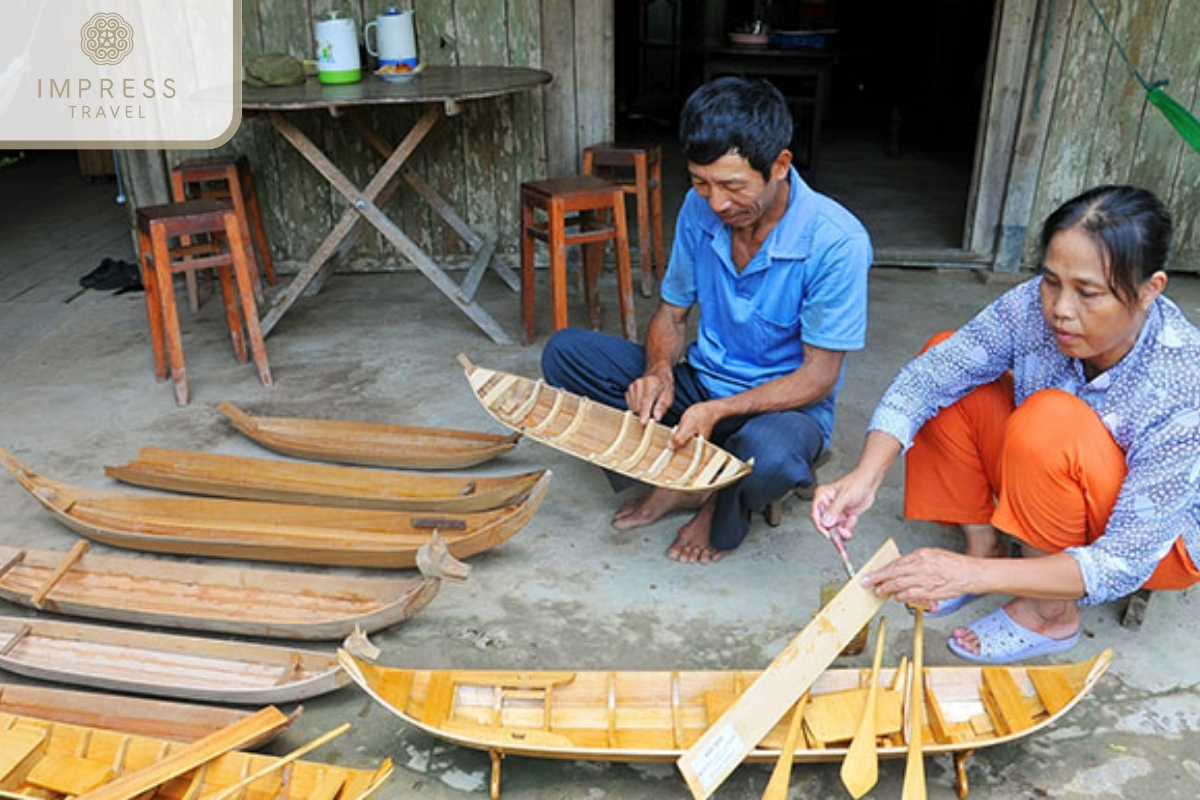
Craft Village Recognition
Origin of Ba Dai Craft Village
At the heart of the craft village’s origin is a history that goes back over a century, as the Ba Ðai boatbuilding workshop established by the renowned craftsman Phạm Văn Thuông, also known as Sáu Thuông. His values and unique skills played a prominent role in the establishment of the community of his fellow artisans, whose successors and apprentices still populate the region.
Development Over the Centuries
Today, Ba Ðai has embraced the changes of modernity while integrating the traditional methods of the craft in the process. The reputation of the village’s output as the best and most durable boats founded by the community has attracted artisans of the craft to the region. The villages’ growth over the last century was driven by such processes of acculturation and generation shifts.
Important Historical Figures
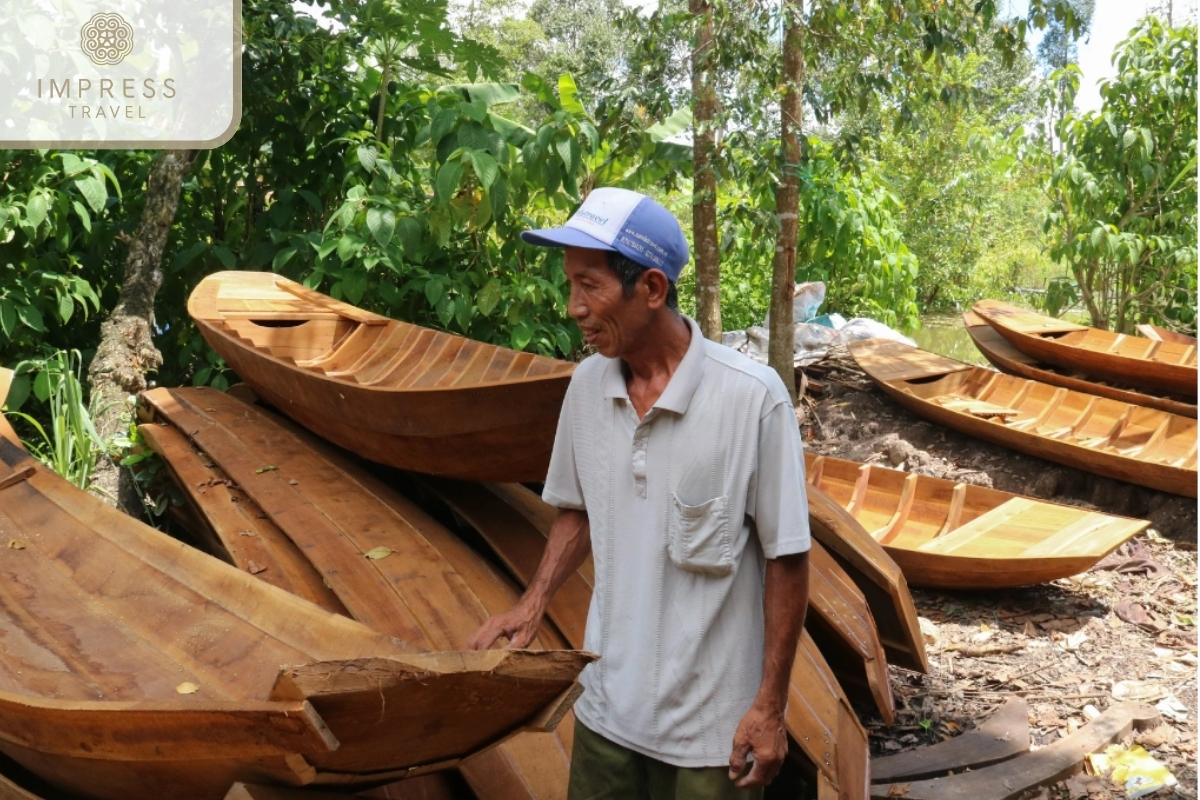
Artisan Pham Van Thuong
Phạm Văn Thuông, the pioneer of Ba Ðai’s boat-building craft, was the most important figure in the village’s history. His tour of duty within his chosen craft and commitment to quality would set the tone and become an example for the generations of his successors. Although the master of the craft himself has been dead for several centuries, local lore about his life, house, and possessions, and his supernatural powers remind the community of his legacy.
Cultural and Economic Significance
Importance in Local Culture
Boatbuilding is not only an occupation in Ba Dai; it is a cultural identity. This boatbuilding workshop on the Mekong River embodies the lifestyle and traditions of those who reside in the Mekong Delta. Boats are used every day to cater to people’s needs, such as fishing, transportation, and trading.
Economic Impact
Whether boats are built for private use or sale, the craft has a tremendous impact on the local economy. In Ba Dai, boats are in high demand and are used in most activities across the delta. As a result, the craft supports entire families and provides a continuous market and income for a great number of residents. Therefore, preserving the occupation helps maintain the economic balance of the village.
Preservation of Traditional Skills
The sensitive nature of the craft implies that numerous efforts are made to ensure that centuries-old skills do not vanish. Regular workshops and training events aimed at talented and passionate young artisans play a critical role in sustaining the operation of Ba Dai’s boatbuilding.
The Art of Boatbuilding
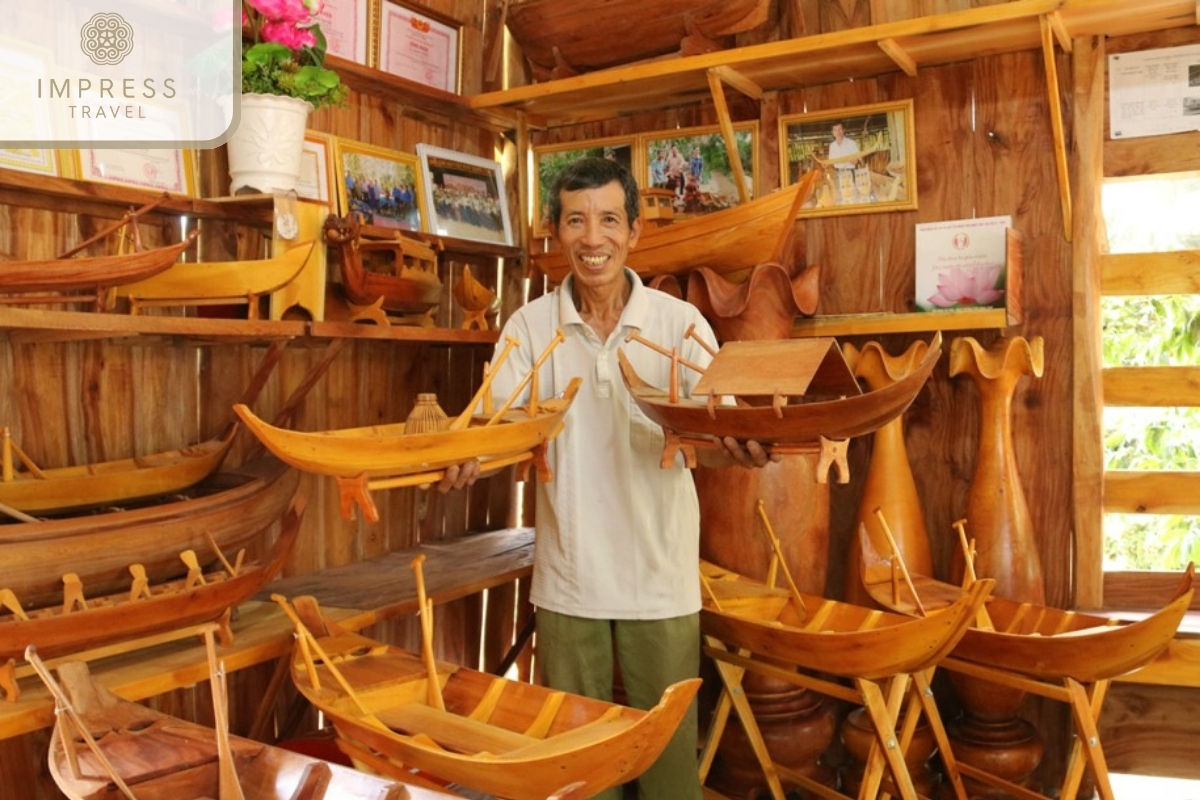
Exhibition area
Detailed Explanation of the Process
The boatbuilding process in Ba Dai Craft Village is a combination of tradition and meticulous craftsmanship. The boatbuilding craft is a careful and detailed process. Once the wood for the boat is selected, the builders proceed to cut it to size, build the frame, and finish by painting and sealing. High-quality wood is used in the process, such as water-resistant Sao and Sến trees.
Tools and Materials Used
To facilitate and speed up the process, the tools and machines used range from traditional chisels, saws, and hammers to more modern rotary and guillotine saws. These tools help the workers not to compromise the quality experience in making a boat. Besides, the craftsmen use eco-friendly materials to lessen the negative environmental impact.
Skills and Techniques
To perfect the craft, workers use a particular technique called him lô or ‘pinning the ribs’. Creating a boat’s sides, uốn bẽ or ‘bending the sides’, is another technique used. The techniques require meticulous and precise work, which later results in sturdy and graceful boats. Overall, the boatbuilding process is a test of patience and skill that results in a finished product resistant to harmful elements and practical to use.
Types of Boats Built

Testing the canoe when it is finished
The Ba Dai Craft Village prides itself on numerous types of boats, adapted to their distinct purposes. The boats that are part of this variety include xuồng cui, ghe tấm bản, and ghe chài.
Xuồng Cui
First, xuồng cui is a small, light boat with excellent mobility. It is ideal for fishing and moving through the narrow, meandering rivers of the Mekong Delta. Light and compact, it is the fisherman’s boat, incredibly mobile, and able to reach difficult-to-reach fishing spots due to its size. Constantly needing to be light and relatively shallow, the boat is made of adequate but light wood. In addition to wood, the design and the hull’s shape allow minimal water resistance, which plays a no lesser role in the boat’s high mobility.
Ghe Tam Bản
Second, ghe tấm bản is a much larger and more massive vehicle to handle huge cargo. Its purpose is to carry goods across the Mekong River in one way and across the Mekong’s tributaries towards Can Tho. Heavier goods and people, the boat is much more stable and durable in its construction. The hull itself is sufficiently broad, and the boat’s durability is supported by extra planks to the hull, tấm bản in its name meaning aptly the three planks. The planks ensure additional buoyancy for extra cargo, and the boat is relatively slow but able to carry a significant weight across the river and deliver the goods and passengers safely to the other side.
Ghe Chài
Finally, ghe chài is the heaviest of cargo boats, able to carry humongous weights for prolonged distances. In addition to lesser goods, they are made to carry the significant cargo of the region’s products, such as rice, fruits, and other products. These boats are critical to trade in the region, adapted to the waters and numerous cargo’s weight. The ghe chài is made of thick, hardwood, with a deep hull to accommodate considerable capacity. The boat is stabilized with reinforced frames and ribs so vital to the boats’ durability and ability to carry significant cargo without breaking and immobility. In addition, as the name chài suggests, the boats are large enough to have a board and a motor for long travels and substantial loads.
Unique Designs and Their Uses
Every boat type built at this boatbuilding workshop on the Mekong River fits the particular specifications of the Mekong Delta waterways. However, the design of these boats does not only say a lot about functionality, but it also reflects various values of the local culture.
Visiting Ba Dai Craft Village
Tourist Activities
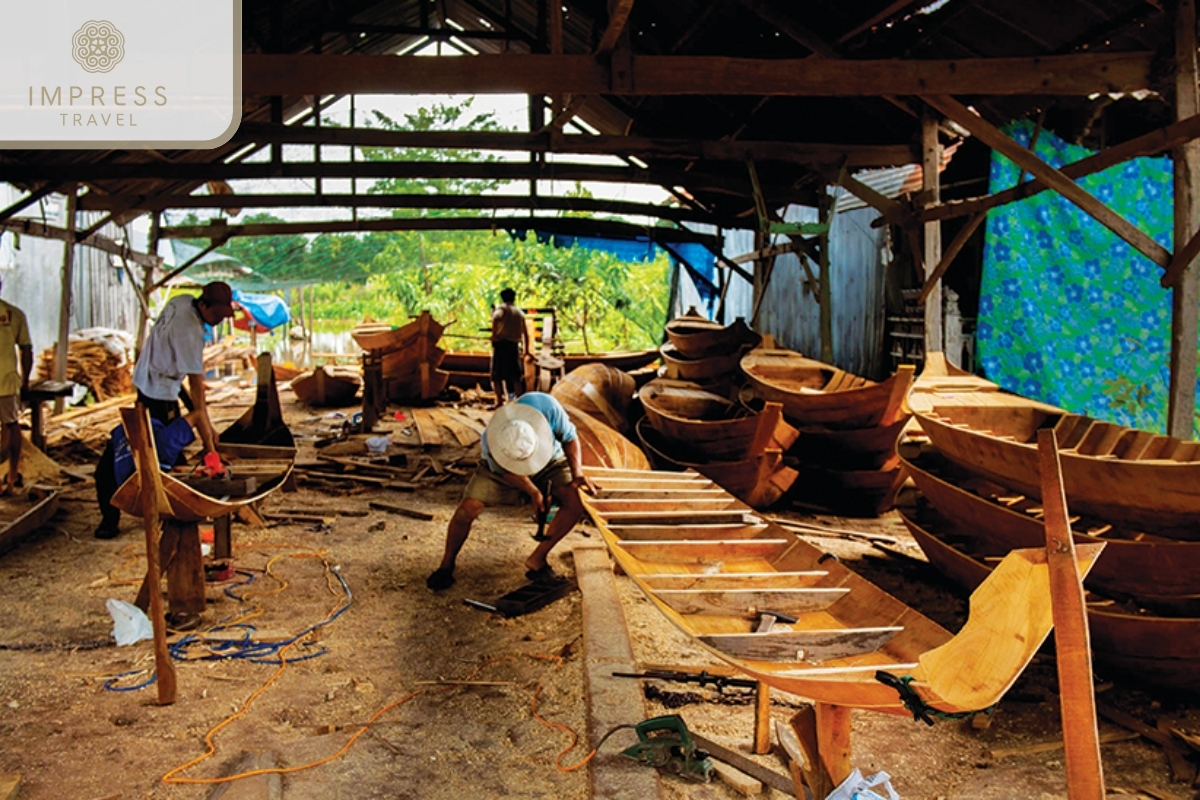
Creating jobs for people
Several activities allow the visitors to obtain a deeper insight into the local culture and get themselves familiar with the craftsmanship in Ba Dai Craft Village. They include:
- Boatbuilding workshops – the visitors get an opportunity to learn the basics of the craft;
- Guided tours around the village and in the beautiful area around;
Interaction with Local Artisans
Meeting the boat-builders provides the possibility to learn about their experiences, hear their stories, and appreciate their craft more closely. Such activities serve to provide the station understanding of the visitors and connect it with the local community.
Supporting Local Economy and Sustainability
How Tourism Helps Sustain the Craft
Ba Dai’s boatbuilding craft can be sustained as a result of tourism to the area. * Workshops and purchase of handcrafted boats as well from the locals will help in ensuring demand and thus production since the popularity will in turn result in an expanded market. * The product will grow further as a result of the work it becomes known locally and even internationally.
Eco-Friendly Practices
It is also vital to note that the use of ecofriendly materials and methods can not only reduce pollution but also minimize other adverse effects thus propagating the practise. * Minimization of waste and sustainable use of resources
Community Efforts
The locals’ participation in initiatives to encourage the processing of boats in the traditional method and educate younger generations concerning the practice.
Practical Information for Visitors
Best Times to Visit
Ba Dai Craft Village is perfect to visit during the dry season, which is from November to April. The weather is best during the season which allows one to make the most out of their outdoor time.
Entry Fees and Tour Options
Entry for this site is not pricey and will aid in maintaining the village. There are various options such as bookings for guided tours of the village and participation in workshops. It is open seven days a week but is best avoided during bad weather.
Conclusion
In conclusion, Ba Dai Craft Village is a fascinating place with cultural importance that will captivate anyone who visits the place. The boatbuilding workshop at the Mekong River shows the rich culture of the Vietnamese. We welcome you to visit this beautiful site and help these artists with your contribution. A boatbuilding workshop in the Mekong River is a place to visit. Such cultural sites tell tales of local heritage. Don’t forget to regularly follow our Fanpage for more interesting information about traveling Mekong to and to book Mekong Tours at the best prices *Handicraft Mekong Tours visit Ba Dai Craft Village (Boat Factory)* @useful link to find any tours in Mekong – https://impresstravel.com/mekong-tours/!





































